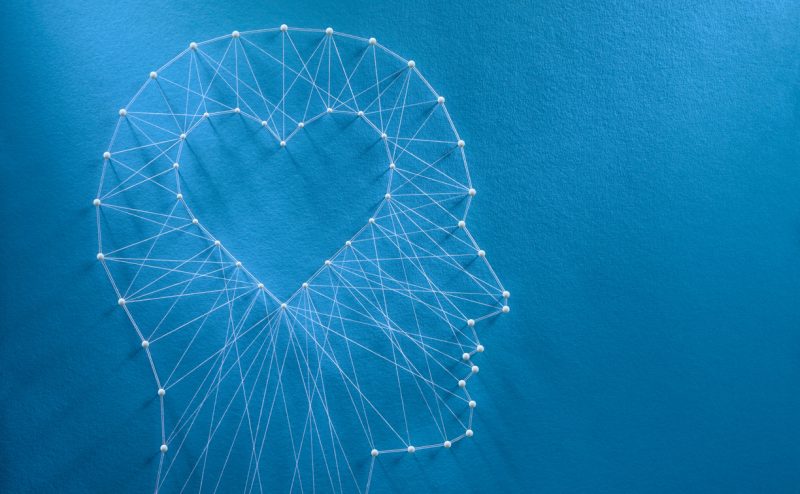Blog Short #66: Be an Empathetic Detective to Improve Your Relationships
Welcome to Monday Blog Shorts – ideas to make even Monday a good day! Every Monday, I share a short article with you about a strategy you can use, or new facts or info that informs you, or a new idea that inspires you. My wish is to give you something to think about in the week ahead. Let’s dig in!

Photo by Pogonici, Courtesy of iStock Photo
There are many ways to improve a relationship, yes? But there is one you can’t do without, and that’s the capacity to show genuine empathy.
Empathy is the glue that keeps a relationship alive and strong. It’s a:
- Salve for conflicts and differences.
- A means of getting closer.
- And an antidote for loneliness and distance.
You gotta have it if you want a relationship that’s satisfying, fulfilling, and thriving!
 An easy way to get better at being empathetic is to become an “empathetic detective.” To help you do that, I’ll go over the three components of empathy, show you how they work, and then give you some ideas about how to use them.
An easy way to get better at being empathetic is to become an “empathetic detective.” To help you do that, I’ll go over the three components of empathy, show you how they work, and then give you some ideas about how to use them.
Let’s start!
Component #1: Cognitive Empathy
“Cognition” is associated with your thinking or intellectual capacity. So cognitive empathy is using your brain’s analytical skills to get a picture of what’s going on. This is the detective part. You’re an investigator.
Your goal is to see things through the other person’s eyes and understand their vision by finding out:
- What they’re thinking and feeling.
- If there’s a background story.
- And, what they want you to know.
You find this out by listening, asking questions, clarifying, and reflecting back what you hear. There’s no judgment. You simply want to understand.
The empathy part comes in when you can imagine how the other person feels by recalling situations where you’ve had similar feelings. You remember what it felt like to be there. You get it.
This type of empathy is a “top-down” process because it uses the newer part of the brain – the prefrontal cortex – where thinking, planning, self-regulation, and other executive functions occur. It involves investigation, analysis, and comparison.
Now let’s go to the next component.
Component #2: Emotional Empathy
With emotional empathy, you actually feel the other person’s feelings rather than just imagine them. Literally.
You “join” the other person, and their emotions reverberate through your body and psyche. This is what’s called being in emotional attunement with someone.
Have you had the experience of listening to a friend, and as they unfold something painful, they tear up and you tear up with them, or you get a lump in your throat or your stomach drops? This is emotional attunement.
You feel their pain as yours. Empathy is “embodied.”
This is a “bottom-up” process that occurs spontaneously and automatically. The feelings come up from the older instinctual and emotional part of your brain – the amygdala.
The way this works is that as you focus on the body language of the person speaking and pick up on facial gestures and postures, as well as hear the words spoken, your brain receives a signal of distress broadcast by the amygdala.
Simultaneously, mirror neurons in your brain replicate the feelings you hear and perceive. To make it a more complete hand-off, the area of the brain that’s activated when you feel pain – the anterior insula – is also activated when you feel someone else’s pain. You literally experience what the other person feels because it’s mirrored in your neurons.
Now, let’s go to the last component.
Component #3: Empathetic Concern
This next component is an activation of the feelings of empathy to do something. It’s the transformation of empathy into compassion and caring.
For example, you might see an older person limping across the street while carrying a bag of groceries, and you can see in her eyes and body language that she’s in pain and suffering. You might even tear up as you watch. The question is:
Will your empathy move you to ask her if you can help and carry her bag, or will you watch until you turn away and go about your business?
We can feel empathy, but compassion moves us to do something to alleviate the pain. It may be that listening until someone is finished talking is enough, or maybe you soothe or hug the person or ask if you can help in some way.
Empathetic concern pushes us beyond just becoming emotionally attuned. We want to help.
Is being empathetic something we come with, or do we have to learn it?
It’s both. All mammals have neural wiring built in to sense the feelings of others. It’s part of the evolutionary need to protect our young, so they survive and grow. We have a “keen attention to an infant’s signal of distress.” We have a “keen attention to an infant’s signal of distress.” Our brain tunes us in by arousing in our own body the infant’s emotional state.
However, more sophisticated emotional empathy and compassion are developed through your interactions and experiences as you grow up.
Your family of origin has the most significant impact on developing self-awareness of your own emotions, as well as your ability to pick up on those of others.
In other words, the apparatus for empathy is there at birth, but the development and depth of it are learned through experience.
You can develop it yourself with practice.
If empathy, and its partner, compassion, don’t come easy, you can develop them. There are three parts to this.
1) Self-Awareness
To read other people’s feelings, you need to be able to read yours first. You have to be more vulnerable. I know, that’s not an idea everyone likes, but start with you. Check in with yourself daily. What’s your emotional temperature? Carefully observe your reactions to things that happen or experiences you have, and honestly monitor your motivations and behavior.
The more you know about yourself, and the less you deny or avoid emotions you don’t want to deal with, the more you can become attuned to others.
2) Practice cognitive empathy first.
Get used to listening attentively, carefully, and without judgment. Watch for bodily gestures or cues to how someone might be feeling. Be a detective. Ask questions and clarify as you go to make sure you’re reading the other person correctly. Be curious and inquisitive. In short, listen to understand.
Even if this is quite difficult for you at first, you’ll get better at it over time and come to enjoy it. It will eventually come easily and naturally. All therapists are taught how to do this in formal classes. There’s no reason you can’t learn to do it too if you haven’t already. It’s a matter of consistent practice.
3) Emotional empathy will follow.
Once you get good at empathetic investigating, it’s time to add emotional empathy to the equation.
This will happen automatically as you become more attuned to yourself. When you increase your self-awareness and by exposing your true feelings to yourself (and maybe to those close to you), you find that you feel for others more deeply. The practice of cognitive empathy, along with deeper self-awareness, brings out your natural instincts toward emotional empathy.
Last Note – Listen more than you talk!
Listening with an open and curious mind is the way in. It’s an art, and you can get good at it.
For more help with listening, read this article. You might also enjoy reading Focus by Daniel Goleman, especially “Part 3 – Reading Others.”
That’s all for today! Hope you have a great week!
All my best,
Barbara
FOOTNOTES
Decety, J. (2010). The neurodevelopment of empathy in humans. Developmental Neuroscience, 32(4): 257-267.DOI: 10.1159/000317771
Decety, J (Ed.). (2012). Empathy: From Bench to Bedside. The MIT Press.
Goleman, D. (2013). Focus: The Hidden Driver of Excellence. HarperCollins Publishers.
Jackson, P. L., Rainville, P. & Decety, J. To what extent do we share the pain of others? Insight from the neural bases of pain empathy. Pain. 125(1-2): 5-9. DOI: 10.1016/j.pain.2006.09.013
Stephens, G. J., Silbert, L. J. & Hasson, U. Speaker-listener neural coupling underlies successful communication. Proceedings of the National Academy of Sciences. 107(32): 14425-30. DOI:10.1073/pnas.1008662107